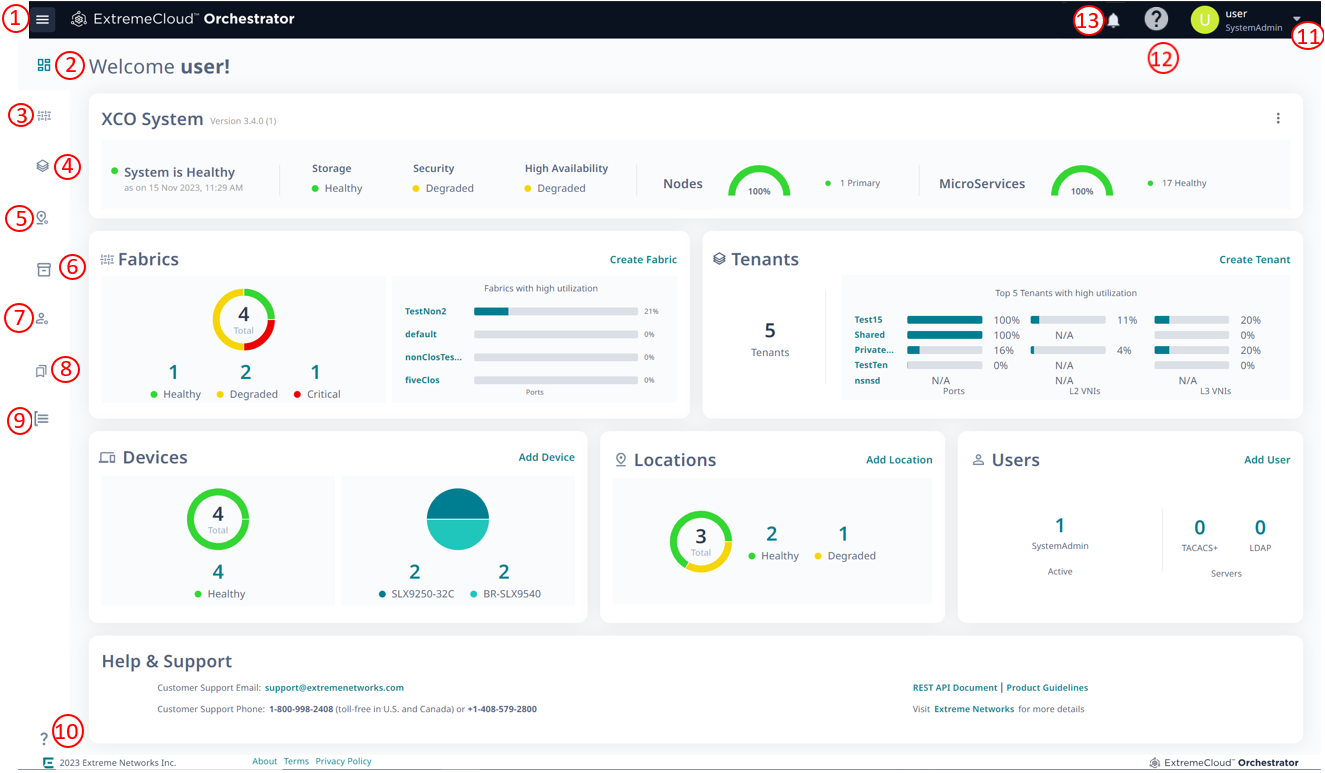User Interface
The XCO interface provides access to all system functions. The interface pages vary depending on the deployment mode and the logged-in user role. For more information about user roles, see User Roles.
User interface descriptions describes the numbered elements in this diagram.

| Legend | Interface Area | Description |
|---|---|---|
|
1 |
Navigation menu |
Provides access to all pages of the interface. |
|
2 |
Dashboard |
Provides an overview of system health and quick access to locations, devices, fabrics, and users configuration pages. See Dashboard. |
|
3 |
Fabrics (Fabric Mode only) |
Provides access to the fabrics management page. See Fabrics (Fabric Mode). |
| 4 |
Tenants (Fabric Mode only) |
Provides access to the tenant management page. See Tenants (Fabric Mode). |
|
5 |
Locations |
Provides access to the location management page. See Locations. |
|
6 |
Device Inventory |
Provides physical details and access to all configuration settings of the selected device. Details vary by device type. See Device Inventory. |
|
7 |
Users |
Provides access to settings for users, profile, and authentication. See Users. |
|
8 |
Logs |
Provides access to the logs page. See Logs. |
|
9 |
Library (Packet Broker Mode only) |
Provides access to configured matches, policies, and UDA (user-defined ACL) profiles. See Library (Packet Broker Mode). |
|
10 |
Help & Support |
Provides access to the help and support information. |
|
11 |
User Profile |
Displays the username and role of the logged-in user. From here,
you can perform the following tasks:
|
|
12 |
Online Help | Displays context-sensitive help for the active screen. |
|
13 |
Notifications |
Provides access to the notifications page. The notifications are user specific and do not persist. The |


